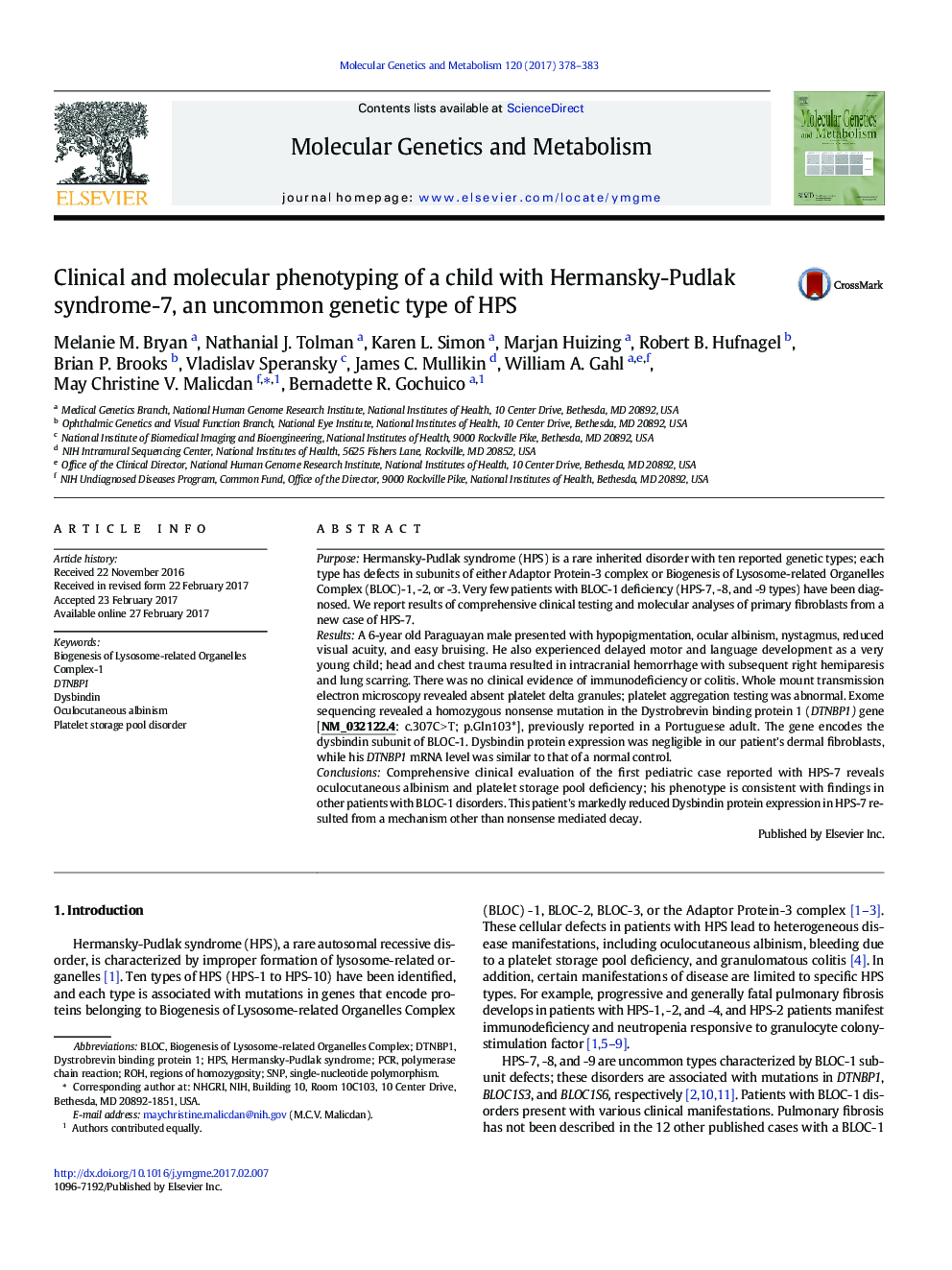| کد مقاله | کد نشریه | سال انتشار | مقاله انگلیسی | نسخه تمام متن |
|---|---|---|---|---|
| 5513950 | 1541555 | 2017 | 6 صفحه PDF | دانلود رایگان |

- The first pediatric patient was identified with Hermansky-Pudlak syndrome type 7 (HPS-7).
- Exome sequencing revealed a homozygous nonsense mutation in the DTNBP1 gene, previously reported in a Portuguese adult.
- Human HPS-7 cells showed negligible Dysbindin protein expression and DTNBP1 mRNA level similar to that of a normal control.
- This HPS-7 patient's reduced Dysbindin protein expression resulted from a mechanism other than nonsense mediated decay.
PurposeHermansky-Pudlak syndrome (HPS) is a rare inherited disorder with ten reported genetic types; each type has defects in subunits of either Adaptor Protein-3 complex or Biogenesis of Lysosome-related Organelles Complex (BLOC)-1, -2, or -3. Very few patients with BLOC-1 deficiency (HPS-7, -8, and -9 types) have been diagnosed. We report results of comprehensive clinical testing and molecular analyses of primary fibroblasts from a new case of HPS-7.ResultsA 6-year old Paraguayan male presented with hypopigmentation, ocular albinism, nystagmus, reduced visual acuity, and easy bruising. He also experienced delayed motor and language development as a very young child; head and chest trauma resulted in intracranial hemorrhage with subsequent right hemiparesis and lung scarring. There was no clinical evidence of immunodeficiency or colitis. Whole mount transmission electron microscopy revealed absent platelet delta granules; platelet aggregation testing was abnormal. Exome sequencing revealed a homozygous nonsense mutation in the Dystrobrevin binding protein 1 (DTNBP1) gene [NM_032122.4: c.307CÂ >Â T; p.Gln103*], previously reported in a Portuguese adult. The gene encodes the dysbindin subunit of BLOC-1. Dysbindin protein expression was negligible in our patient's dermal fibroblasts, while his DTNBP1 mRNA level was similar to that of a normal control.ConclusionsComprehensive clinical evaluation of the first pediatric case reported with HPS-7 reveals oculocutaneous albinism and platelet storage pool deficiency; his phenotype is consistent with findings in other patients with BLOC-1 disorders. This patient's markedly reduced Dysbindin protein expression in HPS-7 resulted from a mechanism other than nonsense mediated decay.
Journal: Molecular Genetics and Metabolism - Volume 120, Issue 4, April 2017, Pages 378-383